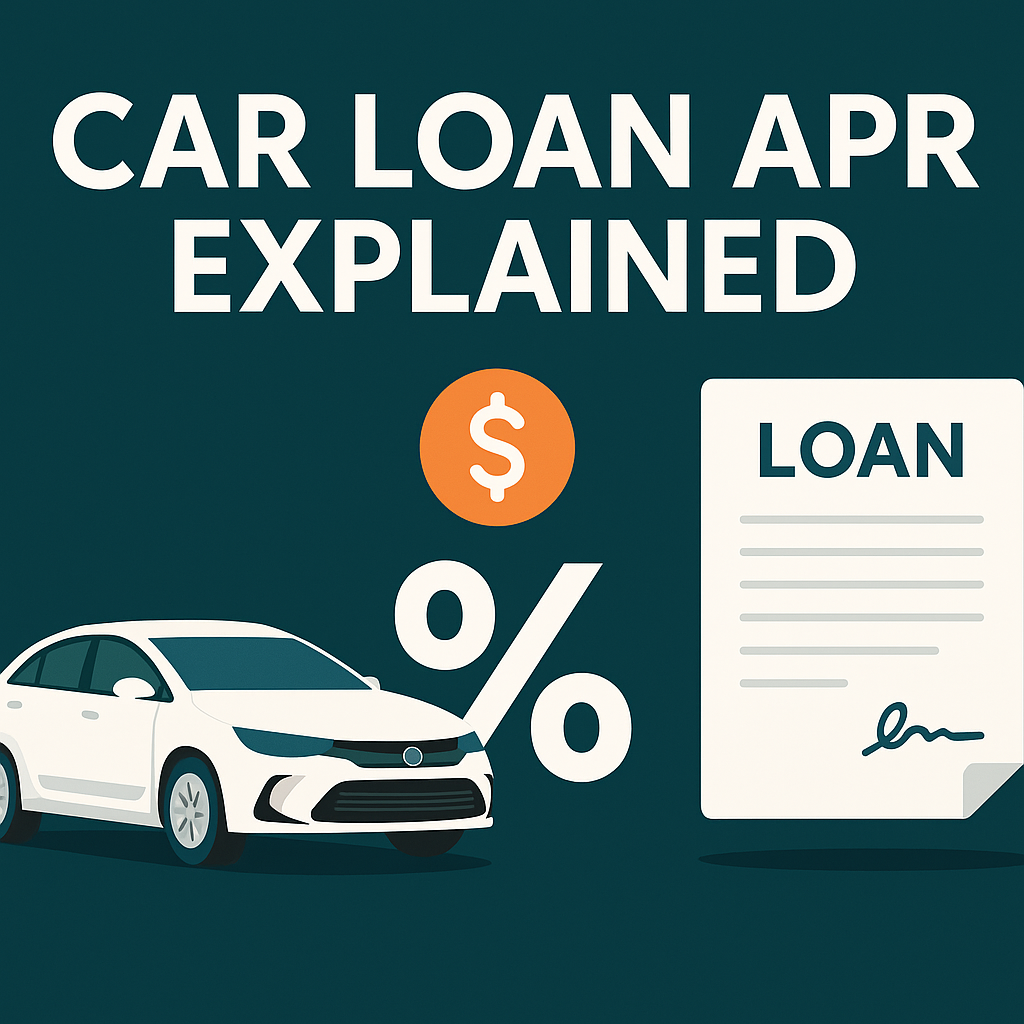When shopping for a car, one of the most confusing parts of the process isn’t picking the vehicle—it’s figuring out how car financing works. You’ve probably seen the term APR (Annual Percentage Rate) on loan offers, but what does it really mean? How does it impact your monthly payment, and how can you make sure you’re getting a good deal?
This guide will simplify car loan APR and help you understand exactly how interest rates work—so you can make confident decisions whether you’re buying new or used in 2024.
What Is Car Loan APR?
APR stands for Annual Percentage Rate, and it represents the total cost of borrowing money, expressed as a yearly percentage. It includes not just the interest rate on the loan, but also any fees or additional charges involved in the financing.
Think of APR as the “true cost” of borrowing—it helps you compare one loan to another, even if the base interest rates are different.
APR vs. Interest Rate: What’s the Difference?
Interest Rate is the basic percentage charged on the loan principal (amount borrowed).
APR includes the interest rate plus additional lender fees like origination charges, document fees, and application processing.
Example:
Loan A: 5.5% interest rate, 6.2% APR
Loan B: 5.5% interest rate, 5.5% APR (no extra fees)
While both loans have the same interest rate, Loan B is the better deal because it has a lower APR—meaning fewer added costs.
How APR Affects Your Monthly Payment
The higher the APR, the more you’ll pay in interest over the life of the loan. Even a 1% difference can cost you hundreds—or thousands—depending on the loan amount and term.
Let’s say you’re borrowing $25,000 over 5 years:
At 4% APR, your monthly payment is ~$460
At 6% APR, your monthly payment is ~$483
Total interest difference over 60 months: $1,380
APR matters more the longer you finance the car. A shorter loan term (like 36 months) will reduce the total interest, but increase monthly payments. A longer loan term (like 72 months) lowers monthly costs, but increases overall interest paid.
What Factors Affect Your Car Loan APR?
Credit Score
Excellent (750+): 3%–5% APR
Good (700–749): 5%–7% APR
Fair (600–699): 8%–12% APR
Poor (<600): 12%–20%+ APR
Loan Term
Shorter terms = lower APR
Longer terms = higher APR
New vs. Used Car
New cars often have lower APRs
Used cars come with higher risk and higher APRs
Down Payment
A larger down payment lowers lender risk and may result in a better rate
Lender Type
Banks, credit unions, online lenders, and dealerships all offer different APRs
Promotions
Manufacturers may offer 0% APR for qualified buyers on new models (great deal if you qualify)
Where to Find the Best APR Offers
Credit Unions: Often offer the lowest rates, especially for members
Banks: Competitive rates with long-standing customers
Dealership Financing: Can be convenient but may include hidden fees
Online Lenders: Fast pre-approvals and rate comparisons
Tip: Always get pre-approved from at least one lender before going to the dealership. This gives you negotiating power and protects you from inflated dealer markups.
How to Lower Your APR
Improve your credit score before applying
Make a larger down payment
Choose a shorter loan term if you can afford higher monthly payments
Shop multiple lenders to compare rates
Avoid add-ons that increase the loan total (like warranties or gap insurance unless necessary)
Avoid These APR Traps
Teaser Rates: Some dealers advertise 0% APR but only offer it on specific trims or to top-tier credit buyers
Long-term loans with low monthly payments: They seem affordable monthly but cost more in the long run
Bundled extras: Lenders may roll extra products into the loan, increasing the effective APR
Should You Focus on APR or Monthly Payment?
Both matter—but APR tells you the full story. A low monthly payment might feel affordable, but if it comes with a high APR and a long term, you’re likely overpaying for the vehicle.
Use auto loan calculators to play with scenarios and find the best balance between payment size and interest paid.
APR Ranges in 2024 (U.S. Averages)
| Credit Score Range | New Car APR | Used Car APR |
|---|---|---|
| 781–850 | 4.75% | 5.85% |
| 661–780 | 6.25% | 7.50% |
| 601–660 | 9.00% | 11.25% |
| 501–600 | 12.75% | 17.00% |
| 300–500 | 15.50%+ | 20.00%+ |
Final Thoughts: Know Before You Sign
Understanding APR isn’t just about math—it’s about protecting your budget. Whether you’re buying your first car or trading in for something new, don’t get distracted by the monthly payment alone. Compare total loan cost, read the fine print, and shop smart.
Getting a car should feel like a win—not a financial trap. Know your APR, and you’ll be in the driver’s seat of your finances too.
